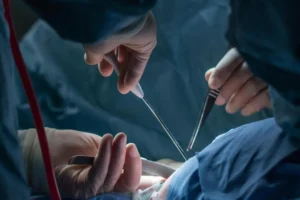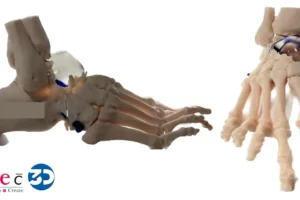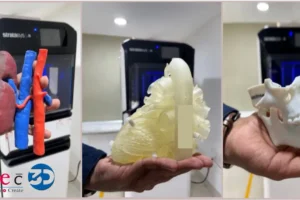In the fast-evolving landscape of healthcare, advancements in technology continue to revolutionize patient care and medical education. Among these innovations, 3D printing stands out as a game-changer, particularly in the realm of anatomical models. These intricately detailed replicas offer invaluable insights for surgeons, medical students, and researchers alike, providing a hands-on approach to understanding complex anatomical structures and medical procedures. You can check latest updates of 3D printing healthcare use on our website Curewith3D.
Behind the scenes of these remarkable creations lies a fusion of cutting-edge technology and specialized expertise. Let’s take a closer look at the fascinating world of 3D printed anatomical models and the driving forces behind their development.
The Technology Behind the Magic
At the heart of 3D Printed Anatomical Model is a process known as additive manufacturing, where successive layers of material are deposited to create a three-dimensional object. This technology allows for the precise replication of anatomical structures, capturing even the most intricate details with remarkable accuracy.
Various printing techniques are employed, including stereolithography (SLA), fused deposition modeling (FDM), and selective laser sintering (SLS), each offering its own unique advantages in terms of resolution, material properties, and cost-effectiveness. These techniques enable the production of models that closely mimic the texture, density, and flexibility of human tissues, providing a lifelike experience for users.
Expertise at Work
While the technology forms the foundation, it is the expertise of skilled professionals that truly brings 3D printed anatomical models to life, like the latest designs uploaded on our website Curewith3D. Medical illustrators, engineers, and anatomists collaborate closely to ensure the accuracy and functionality of each model, drawing on their collective knowledge to address anatomical variations, surgical nuances, and educational objectives.
From patient-specific models used for pre-surgical planning to educational tools designed to enhance learning outcomes, these experts play a pivotal role in tailoring each model to its intended purpose. Their attention to detail and commitment to excellence ensure that every aspect of the anatomy is faithfully reproduced, empowering users to explore and understand the complexities of the human body like never before.

Advancing Healthcare and Education with 3D Printed Anatomical Models
The impact of 3D printed anatomical models extends far beyond the confines of the laboratory or operating room. These innovative tools have the potential to improve patient outcomes, enhance surgical training, and drive medical innovation. By providing surgeons with a tangible representation of patient anatomy, they can better visualize surgical approaches, anticipate challenges, and optimize procedural outcomes. for example Curewith3D
Similarly, medical students and professionals benefit from hands-on experience with anatomical models, gaining a deeper understanding of anatomy, pathology, and surgical techniques in a risk-free environment. With access to customized models that reflect real patient anatomy, students can hone their skills and confidence before entering the operating room, ultimately raising the standard of care and improving patient safety.
Conclusion
In conclusion, 3D printed anatomical models represent a convergence of technology and expertise that is transforming healthcare and education. By harnessing the power of additive manufacturing and leveraging the insights of dedicated professionals, these models offer unparalleled opportunities for learning, innovation, and patient care.
As we look to the future, the continued advancement of 3D printing technology Curewith3D and the ongoing collaboration of multidisciplinary teams promise to further expand the potential of anatomical modeling, unlocking new possibilities for medical practice and discovery. Behind the scenes, the journey continues, driven by a shared commitment to excellence and a passion for advancing the frontiers of healthcare.





